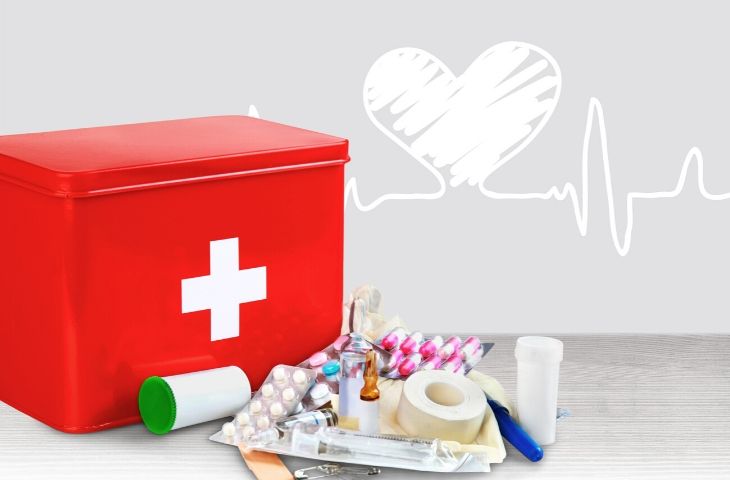First Aid Kits in the workplace are essential. We hope we won’t need them, but when we do it’s important to know that your business is well stocked with first aid kits that contain all the products and equipment you need.
So, how do you know which, of the many first aid kits is right for your business?
Your first step should be to check the first aid kit requirements of your local state or territory work health and safety authority, as well as Safe Work Australia. You can find links to relevant information HERE.
Most reputable First Aid Kits meet these guidelines, however it always pays to check.
Once you have reviewed this information, there are some other considerations to make for the most appropriate first aid kit.
The Type of Work and any Associated Hazards
Some work environments pose a greater risk of certain injuries or illnesses than others. For example, factories, construction sites and motor vehicle workshops have a greater risk of injury that would require immediate medical treatment than an office or library. These workplaces therefore require different First Aid Kits.
Consider the type of hazards in your organisation and potential injuries that might result from these. For example, a potential hazard in an office environment might be overextension causing muscular strain, or slips, trips, falls and cuts. In a warehouse or factory, there are additional risks like moving vehicles or large machinery that could cause serious injury. A laboratory or medical setting poses a risk for chemical spills or bio-hazards. Potential injuries resulting from these hazards would require different, and perhaps specialised First Aid products and equipment.
Location
An important factor to think about is the response time for emergency services. If you are in a remote area, it is a good idea to have a more comprehensive First-Aid Kit on hand, as well as somebody trained in administering First Aid.
The Number of Employees
This is an important consideration as you will need to make sure your supplies cater to the number of people on site. This includes any contractors, casual employees and volunteers. You should also consider making special provisions for any workers with a disability or known health concern.
Other First Aid Kit Considerations
- First Aid Kits should be kept in a convenient and accessible area, a larger workplace may need to place kits in more than one area.
- While they can be any size or shape they should be large enough to hold all items, be easily accessible to everyone (not locked) and be able to protect the contents from dust, moisture and contamination.
- Kits should be easily located, and identifiable by a white cross that is prominently displayed on the outside of the pack.
- All kits should contain a complete contents list. Consider purchasing guides or wall charts to make using the kits easier for staff.
- Provide First Aid training for staff, and ensure your First Aid Officer has the required training.
- Some First Aid supplies have expiration dates so be sure to check contents regularly and replenish any missing items from your contents list. This task is usually allocated to the First Aid Officer.
- Generally, medications, even asprin or paracetamol, should not be included in First Aid Kits as they could have harmful side-effects, or impact any medical treatment might be later required. However, if the First Aid Kit is located in a remote area where medical attention is not quickly accessible, some limited medications could be considered for inclusion.
Choosing the right First Aid Kit is a process that requires some consideration, as the health and safety of your staff are what matter most.
To choose the right First Aid Kit for your business use our handy First Aid Kit Guide.
COS has a large range of First Aid Kits and supplies available, as well as other workplace health and safety equipment .

